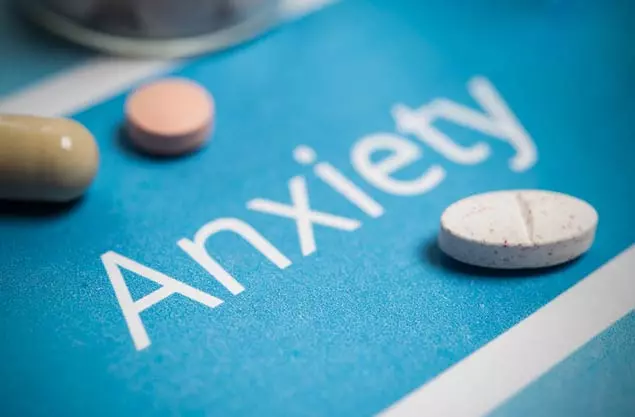Anxiety in children is a prevalent and often misunderstood phenomenon that can significantly impact their daily lives and overall well-being. While it’s normal for children to experience occasional worries or fears, persistent and excessive anxiety can interfere with their ability to function effectively in various aspects of life, including school, social relationships, and family dynamics. In this article, we will explore the signs of anxiety in children, delve into its underlying causes, and discuss effective solutions for anxiety managing and alleviating anxiety symptoms.
Signs of Anxiety in Children
- Physical Symptoms: Children experiencing anxiety may exhibit physical symptoms such as stomachaches, headaches, muscle tension, fatigue, or difficulty sleeping. These manifestations can often be mistaken for physical illnesses, highlighting the importance of considering emotional factors when assessing a child’s health.
- Emotional Signs: Anxiety can manifest as heightened emotional responses, including irritability, restlessness, frequent crying, or emotional outbursts. Children may also express a persistent sense of fear, worry, or dread about various situations or activities, even when there is no apparent threat.
- Behavioral Changes: Anxiety can influence a child’s behavior in numerous ways. They may become more withdrawn, avoidant, or clingy, particularly in unfamiliar or challenging situations. Conversely, some children may display oppositional or defiant behavior as a coping mechanism for their underlying anxiety.
- Academic and Social Challenges: Anxiety can impact a child’s academic performance and social interactions. They may experience difficulty concentrating, completing tasks, or participating in classroom activities due to overwhelming worry or fear. Additionally, anxiety can impair a child’s ability to form and maintain friendships, leading to feelings of isolation or loneliness.
Understanding the Causes of Anxiety in Children
- Genetic Factors: Research suggests that genetics play a significant role in predisposing children to anxiety disorders. Children with a family history of anxiety or other mental health conditions may be more susceptible to developing anxiety themselves.
- Environmental Influences: Environmental factors, such as stressful life events, trauma, or chronic exposure to family conflict, can contribute to the development of anxiety in children. Additionally, parental modeling of anxious behaviors or overly protective parenting styles can inadvertently reinforce anxious responses in children.
- Neurobiological Factors: Imbalances in neurotransmitters, such as serotonin and dopamine, may contribute to the onset of anxiety disorders in children. These neurobiological factors can affect the brain’s processing of emotions and stress responses, leading to heightened anxiety levels.
- Temperamental Traits: Certain temperamental traits, such as shyness, perfectionism, or sensitivity to criticism, may predispose children to anxiety disorders. While these traits alone do not guarantee the development of anxiety, they can interact with other factors to increase vulnerability.
Effective Solutions for Managing Anxiety in Children
- Psychoeducation: Providing children and their families with information about anxiety and its effects can help demystify the experience and reduce stigma. Psychoeducation can empower children to recognize their anxiety symptoms, understand their triggers, and learn coping strategies to manage their emotions effectively.
- Cognitive-Behavioral Therapy (CBT): CBT is a widely recognized and evidence-based treatment approach for anxiety disorders in children. Through CBT, children learn to identify and challenge irrational thoughts or beliefs that contribute to their anxiety, as well as develop practical skills for relaxation, problem-solving, and assertiveness.
- Exposure Therapy: Exposure therapy involves gradually exposing children to feared situations or stimuli in a controlled and supportive environment. By confronting their fears systematically, children can learn that their anxiety responses diminish over time, leading to a reduction in overall anxiety levels.
- Mindfulness and Relaxation Techniques: Mindfulness practices, such as deep breathing exercises, guided imagery, or progressive muscle relaxation, can help children cultivate awareness of their thoughts and emotions while promoting relaxation and stress reduction. Teaching children these techniques empowers them to regulate their anxiety responses independently.
- Parental Support and Involvement: Parents play a crucial role in supporting their children’s emotional well-being and facilitating anxiety management. Providing a nurturing and validating environment, fostering open communication, and modeling healthy coping behaviors can significantly impact a child’s ability to cope with anxiety effectively.
Conclusion
Anxiety in children is a complex and multifaceted phenomenon that requires a comprehensive approach to assessment and intervention. By recognizing the signs of anxiety, understanding its underlying causes, and implementing effective solutions, parents, educators, and mental health professionals can support children in managing their anxiety symptoms and thriving in various aspects of life. Through collaboration and empathy, we can create environments that promote resilience, emotional well-being, and healthy development for all children.
